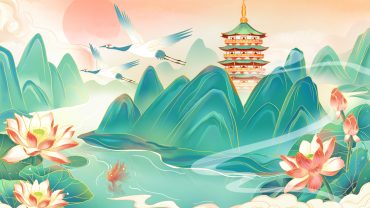Fragrant Essence: A Thousand-Year Journey Through Chinese Tea Culture
Content Preview
Exploring the historical origins and varieties of Chinese tea, its distinct types and characteristics, experiencing tea culture during travel in China, and the profound integration of Chinese tea culture with traditional Chinese culture.
All VISA-related queries are covered in China Travel Guide (Updated January 23, 2024)
For a quick overview, check out China’s 144-hour Visa-Free Policy
Or Plan your Trip to China can help you

The Historical Origins and Varieties of Chinese Tea
Chinese tea boasts a history that stretches back thousands of years. Legend has it that tea was discovered by the ancient figure Shennong and initially used as a medicinal herb. By the Zhou Dynasty, tea had become a staple beverage. The Tang Dynasty, marked by Lu Yu’s “The Classic of Tea,” represented the golden era of tea culture, symbolizing its maturity. Since the Song Dynasty, the art of tea-making evolved significantly, becoming an essential part of social and cultural activities.
Main Types of Tea and Their Characteristics
Chinese tea, classified into six major types based on its processing techniques, each possesses unique flavors and brewing methods:
Green Tea: Examples include Longjing and Bi Luo Chun. Unfermented, preserving the green color of the leaves, with a fresh taste.
Black Tea: Such as Qimen Black Tea and Dian Hong. Fully fermented, resulting in a reddish tea soup and a rich flavor.
Oolong Tea: Examples include Tieguanyin and Da Hong Pao. Partially fermented, with a flavor that lies between green and black tea, characterized by a rich aroma.
White Tea: Such as Bai Hao Yin Zhen and Bai Mu Dan. Lightly fermented, known for its light taste and elegant aroma.
Yellow Tea: Like Junshan Yinzhen, lightly fermented, with a mellow taste and bright yellow color.
Dark Tea: Such as Pu’er, specially fermented, known for its unique taste and ability to be aged.
Chinese Tea Drinking Habits
Daily Tea Drinking Rituals
In China, tea drinking is a deeply ingrained daily habit. A cup of tea in the morning can refresh and invigorate; afternoon tea serves as a time for relaxation and rest. Chinese people choose different types of tea based on the season, climate, and even personal health conditions. For example, in spring, people tend to prefer fresh green tea, while in the cold winter months, they might opt for the warmer black or dark teas.

Tea Art and Social Interaction
In China, brewing and drinking tea is not only a personal pleasure but also a social activity. Whether it’s a gathering of friends and family or a business meeting, brewing a pot of good tea creates a comfortable atmosphere and shows respect and courtesy. Tea art, the art of brewing tea, is a popular cultural activity. Each movement in tea art performance is meticulous, embodying the elegance and depth of Chinese culture.
Experiencing Tea Culture in China
Tea Gardens and Tea Houses as Tourist Experiences
The culture of tea in China can be experienced in many places, especially in tea gardens and tea houses. Many famous teas, like Longjing and Bi Luo Chun, have their own origins. Visitors can personally visit these tea gardens, learning about tea planting, picking, and production processes. Additionally, in many Chinese cities, particularly Hangzhou, Suzhou, and Chengdu, numerous tea houses offer authentic Chinese tea experiences. Here, not only can a variety of teas be tasted, but visitors can also enjoy tea art performances, immersing themselves in the charm of Chinese tea culture.

Tea Culture-Related Activities and Festivals
Many places in China have festivals and events celebrating tea culture. For example, the Longjing Tea Culture Festival in Hangzhou and the Oolong Tea Culture Festival in Fujian. These events typically include tea art performances, tea tasting competitions, and tea culture lectures, providing an excellent opportunity for visitors to deeply understand Chinese tea culture. Moreover, some areas also organize tea picking and tea-making experience activities, allowing tourists to experience the entire process from picking to making tea.
The Rich Integration of Chinese Tea Culture with Traditional Chinese Culture
The Status of Tea Culture in Chinese Culture
Tea holds a very important place in Chinese culture. It is not just a beverage but an integral part of traditional Chinese culture. Throughout Chinese history, tea has been closely linked with poetry, calligraphy, and painting, serving as an important medium for literati to express emotions and artistic cultivation. Tea culture reflects the Chinese pursuit of harmony, tranquility, and appreciation of natural beauty.
The Connection between Tea and Chinese Art and Philosophy
Chinese tea culture is closely connected with art and philosophy. In Chinese painting and calligraphy, elements of tea are often present. The principles emphasized in the tea ceremony, such as “harmony, respect, purity, and tranquility,” are not only the basic principles of tea brewing but also align with Daoist and Zen philosophical thoughts. These principles in tea culture emphasize inner peace and the pursuit of a beautiful life, reflecting the attitudes and values of the Chinese towards life.





Comment (0)